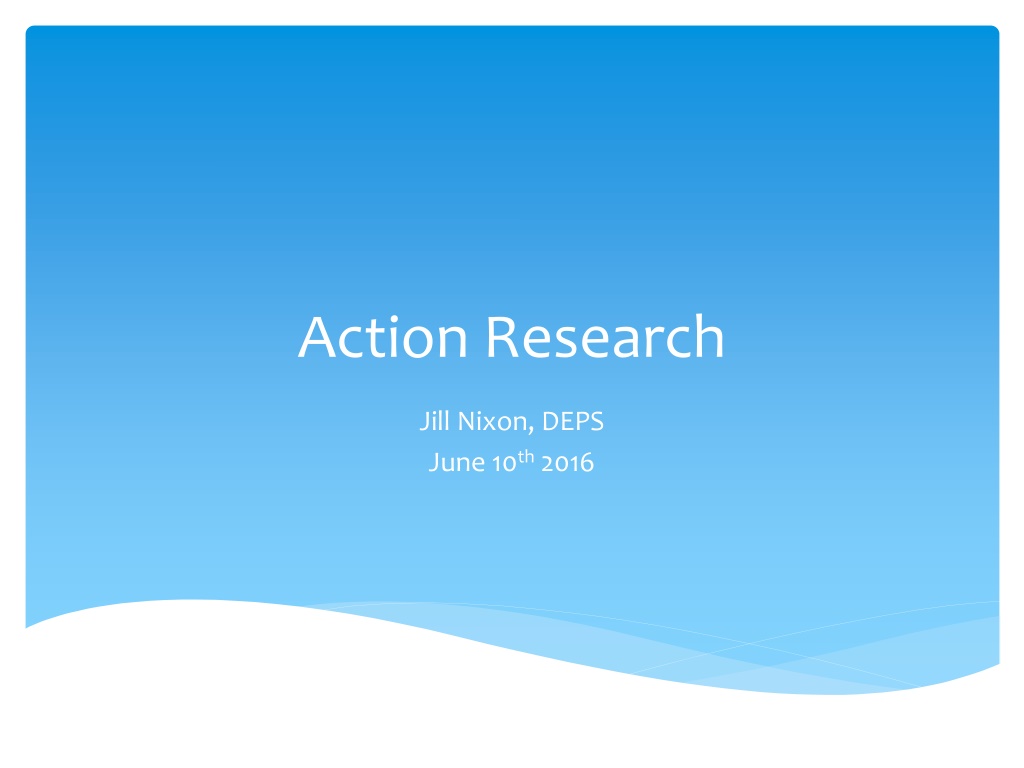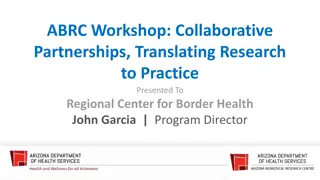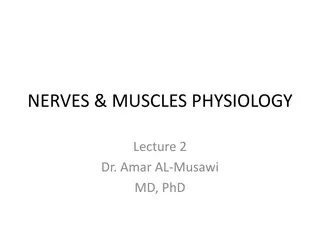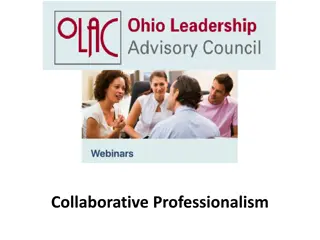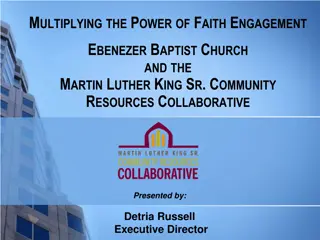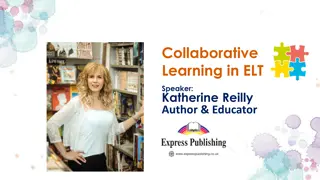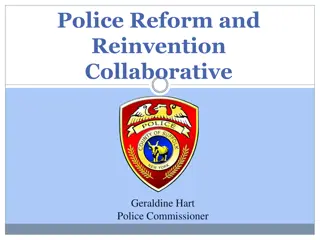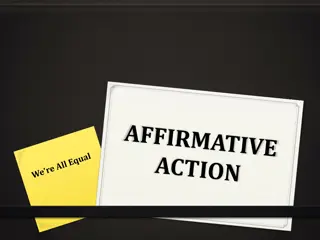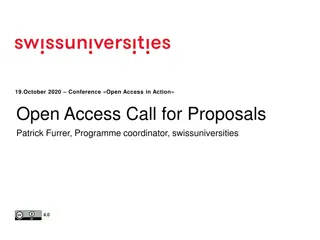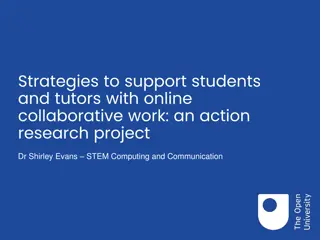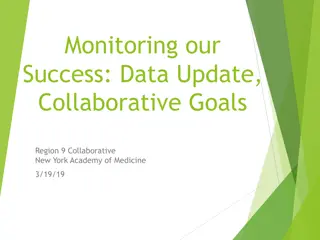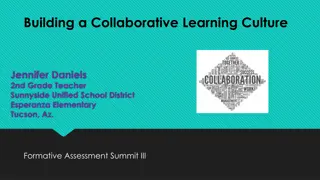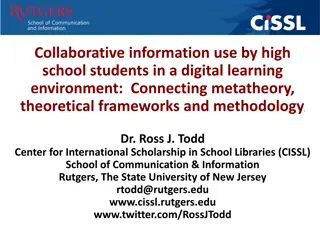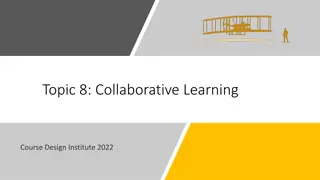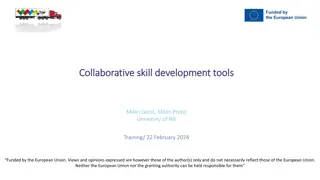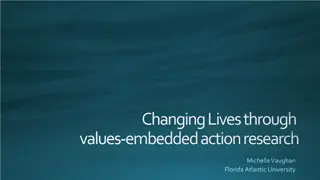Understanding Collaborative Action Research in Education
Collaborative Action Research (CAR) is a systematic approach that combines action and reflection to bring about improvement in educational practices. It involves individuals or groups researching aspects of their own practice to facilitate progress and deeper understanding. The process includes defining clear aims, collecting relevant data, making changes for improvement, and sharing learnings. CAR follows a three-step model focusing on vision, measurement, and implementation. Furthermore, Education Scotland highlights six key questions to ensure effective planning and execution of action research initiatives.
Download Presentation

Please find below an Image/Link to download the presentation.
The content on the website is provided AS IS for your information and personal use only. It may not be sold, licensed, or shared on other websites without obtaining consent from the author. Download presentation by click this link. If you encounter any issues during the download, it is possible that the publisher has removed the file from their server.
E N D
Presentation Transcript
Action Research Jill Nixon, DEPS June 10th2016
What is Action Research? Action research is a systematic study that combines action and reflection with the intention of improving practice (Ebbutt,1985) Action research is an approach to improving education by changing it and learning from the consequences of changes (Kemmis and Mctaggart,1992)
Action Research Involves individuals or groups researching some aspect of their own practice or environment in order to bring about improvement It can support progress and deeper reflection and understanding at both practitioner and whole-provision levels
Collaborative Action Research (CAR) 3 step model What are we trying to accomplish? Clear vision of aims What results would you like to get and how would you like things to be different How will we know that a change is an improvement? Agree what data you need to collect to measure whether there has been an improvement What change can we then make that will result in improvement? What do you and your team think is a good idea? What evidence do you have from elsewhere about what is most likely to work? What have other people done that you could try? In order to establish What works? What needs to be changed now?
Six Key Questions (Education Scotland, 2015) Is there an agreed AIM that is understood by everyone in the system? Are we using all our knowledge to find the RIGHT CHANGES and prioritise those likely to have the biggest impact in relation to our aim? Does everyone UNDERSTAND THE METHODS we will use to improve the system? Can we MEASURE and report progress on our improvement aim? Are PEOPLE and RESOURCES deployed in the best possible way to support improvement? Do we have clear plans for INNOVATING, TESTING, IMPLEMENTING and SHARING LEARNING so we can translate and apply the improvement more widely?
Collaborative Action Research PDSA (Plan, Do, Study, Act) APDR (Assess, Plan, Do, Review plan act do study Plan- the change to be tested or implemented Do- carry out the test or change Study- data before and after the change and reflect on what was learned Act- plan the next change cycle or full implementation Assess-in light of the existing data, what test or change are we going to implement and why Plan- plan for carrying out the test or change Do- carry out the test or change Review- review the outcome in light of the main aim/question and begin next cycle
Box 1: Assess, Plan, Do, Review Assess What are our main questions/main aim and why? What data/knowledge do we have and what does it tell us? (data gathered in school, research evidence e.g. Sutton Trust) What else do we need to find out? Plan What is the intended outcome? What sources of evidence will we gather in order to measure impact? How do we plan to address the identified need who, what, why, where, when, how? Does everyone know what their role is? Do Implementation of the plan (amendments made as necessary) Review What happened during implementation? What do all the sources of evidence gathered tell us about impact? (triangulation) What do we need to do next (ongoing assess, plan, do, review cycle)?
Box 2: Plan, Do, Study, Act Plan Describe your first (or next) test of change: - what are we trying to accomplish? What cycle number is this? Who, when, where? List the tasks needed to set up this test of change - how will we do it? Predict what will happen when the test is carried out what do we think will happen? What measures will help us to determine if our prediction has succeeded? Do What happened when you ran the test? Describe this. Study Describe the measured results - how do they compare to the prediction? Act What modifications will be made to the plan for the next cycle?
Task Papers of different sorts of action research given to groups to read/discuss and put into one of the frameworks
Key Documents and websites Collaborative Action Research: http://www.educationscotland.gov.uk/Images/CAR_tcm4-870851.pdf Plan Do Study Act/Tools for Improvement: http://www.gov.scot/Topics/Education/Schools/Raisingeducationalattainm ent/RAFA/QIMaterial and http://www.gov.scot/Topics/Education/Schools/Raisingeducationalattainm ent/RAFA and http://www.institute.nhs.uk/quality_and_service_improvement_tools/qua lity_and_service_improvement_tools/plan_do_study_act.html and www.ihi.org/resources Scottish Government National Improvement Framework: www.gov.scot/Topics/Education/Schools/NationalImprovementFramework and www.gov.scot/Topics/Government/PublicServiceReform/Improvementfra mework How good is our school? 4th edition: www.educationscotland.gov.uk/Images/HGIOS4_tcm4-870533.pdf General Teaching Council for Scotland What is Practitioner Enquiry? www.gtcs.org.uk/professional-update/research-practitioner-enquiry/what- is-practitioner-enquiry.aspx
